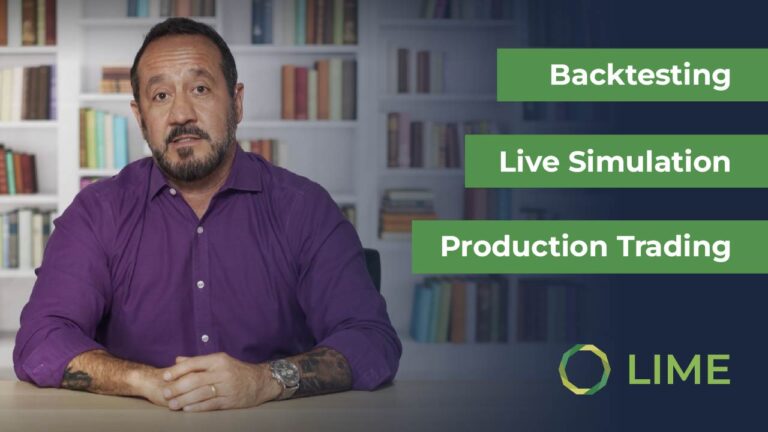Investors like valuations, but market instability dampens their appetite
A recurring theme of multi-month bear markets is the tension between attractive intrinsic valuations (upside) vs. external headwinds from policy makers, macroeconomic variables, and in the current scenario the risk of a deep recession in Europe driven by the war’s effect on commodity markets.
We isolate Amazon as a good example of an industry leader with a strong and resilient business case – however, the same logic applies to any industry leader with a strong balance sheet and a vibrant business case (e.g., JPM, GS, MSFT, GOOG, etc.).
These companies have had a limited impact from the Covid slowdown, post-Covid inflation, and the war in Ukraine. However, AMZN has lost 25% of its market capitalization year-to-date and is effectively flat since mid-2020.
This strategy neuters short-term volatility but keeps long-term upside
The following strategy allows one to build a long-term, “through the cycle” position in the stock, while limiting the risk of a deeper sell-off.
- Buy 100 shares of AMZN at $126.65 each;
- Buy one December 16th put contract with a $120 strike (5.3% below spot) for $7.75;
- Sell one December 16th call contract with a $140 strike (10.5% above spot) for $5.90; and,
- Sell an October 7th call contract and buy an October 7th call contract striking at $133 and $138, respectively (5% and 9% above spot).
The net cost of the position ($12,702) will be nearly the same as buying the stock outright ($12,665), albeit the call spread would require an extra $500 in collateral.
However, the position itself would be protected from a loss greater than 5.5% (9.1% when including the collateral) by year-end and keep 100% of the upside from 2023 onwards.
What could go wrong?
This strategy offers time-limited risk mitigation. At the expiration of the options by December 16th, the investor would have to decide whether to keep the underlying position fully unhedged, or roll-over the strategy. Also, as with most option strategies, the strength of the protection wanes over time as the value of the option converges to the intrinsic value (which could be zero).
Narrowing the range on the front-end, keeping the wide range on the back end
Stock price performance is driven by a permanent tug-of-war between stock-specific drivers and valuation, and market-wide catalysts. In a bull market, investors normally give more weight to a growing economy and cheap cost of capital than to a single stock’s rich valuation, for example. In a bear market, by contrast, investors that otherwise would be attracted to a cheap valuation or a particularly attractive balance sheet could be pushed back by rising interest rates or a slowing economy.
This strategy offsets part of this tension: it allows investors to capture the perceived upside from a stock’s cheap valuation while neutralizing the short-term volatility created by overarching macro conditions (European recession, Fed hawkishness, etc.).
- The underpinning long-term position is 100 shares of AMZN (or whichever stock the investor prefers),
at a cost of $12,665; - This position is hedged with a December 16th put contract with a $120 strike at a cost of $7.75.
This put contract protects the investor from a loss greater than 5.3%,
but the option itself costs 6.1% of the underlying position;
- To finance the cost of the put, the investor sells a December 16th call contract with a $140 strike for $5.90. The investor thus sacrifices upside greater than 10.5% by the expiration date, but reduces the total cost of the hedge to $1.85 (1.5% of underlying position); and,
- Finally, the investor sells an October 7th call spread to substantially finance the rest of the hedging structure – sells a $133 call, buys a $138 call – for $1.48 in net cash proceeds. This spread would require $500 in collateral that would be clawed if the stock gains more than 9% in the first month
The result is that for a substantially equivalent amount of money the investor can build a position at the current valuation while limiting the effect of price volatility to no more than a 5.3% potential loss.
Thesis and Timing
Some investors do not want to miss the opportunity to build long-term positions at attractive valuations but are nervous about the volatility prevailing in the market. For them, this strategy “freezes” the valuation entry point throughout the rest of the year in anticipation of a more constructive macroeconomic backdrop in 2023 by strangling the effective price movement effecting the position to a -5.3% to +10.5% range by December 16, 2022.
Information on Disclosure Agreements
© 2022 Securities are offered by Lime Trading Corp., memberFINRA & SIPC,NFA, Lime Advisory Corp is aninvestment adviser registered with the SEC. and Lime FinTech is a technology business. Collectively known as“Lime Financial” or “Lime” provide various trading, investment advisory services, and technology solutionsincluding web and mobile trading applications, to retail and institutional investors. All investing incurs risk,including but not limited to loss of principal. Further information may be found on our Disclosures Page.
Please read the Options Disclosure Document titled “Characteristics and Risks of Standardized Options”before trading options.Options trading entails significant risk and is not appropriate for all investors. Certain options strategiescarry additional risk and investors may lose 100% of funds invested in a short period of time. Investors shouldconsult with a tax advisor as to how taxes may affect the outcome of any options strategy.
Options tradingprivileges are subject to Lime Trading Corp. review and approval. Transaction costs may be significant inmulti-leg option strategies, including spreads and straddles, as they involve multiple commission charges.
This material has been prepared for informational purposes only and is NOT intended to provide nor should itbe relied on for tax, legal, or accounting advice. Please consult your own tax, legal, and accounting advisorsbefore engaging in any securities transactions as each individual investment(s) may result in diverse/adversetax implications that will affect the outcome of any investment strategy. No information presented hereinshould be considered an offer to buy or sell a particular type of security. This is not an offer or solicitation inany jurisdiction where we are not advertised to do business. Other fees, such as regulatory, service, or otherfees, may apply. Please visit our Pricing Page for further information. Investments involve risk, pastperformance does not represent future results. Diversification may help spread risk but does not protect in adown market. You may lose all of your investment. Investors should evaluate their financial situation,investment objectives, and goals before investing. Substantial risks are involved with electronic trading. Daytrading involves significant risk and is not suitable for all investors. Please see our Day Trading RiskDisclosure Statement for more detailed information. Trading on margin is not appropriate for every investor.Please see our Margin Disclosure Statement for information on risks. System response may vary due tomultiple factors including but not limited to trading volumes, market conditions, system performance, andother factors. Access to electronic services may be limited or unavailable during periods of peak demand,market volatility, systems upgrades, maintenance, or for other reasons





